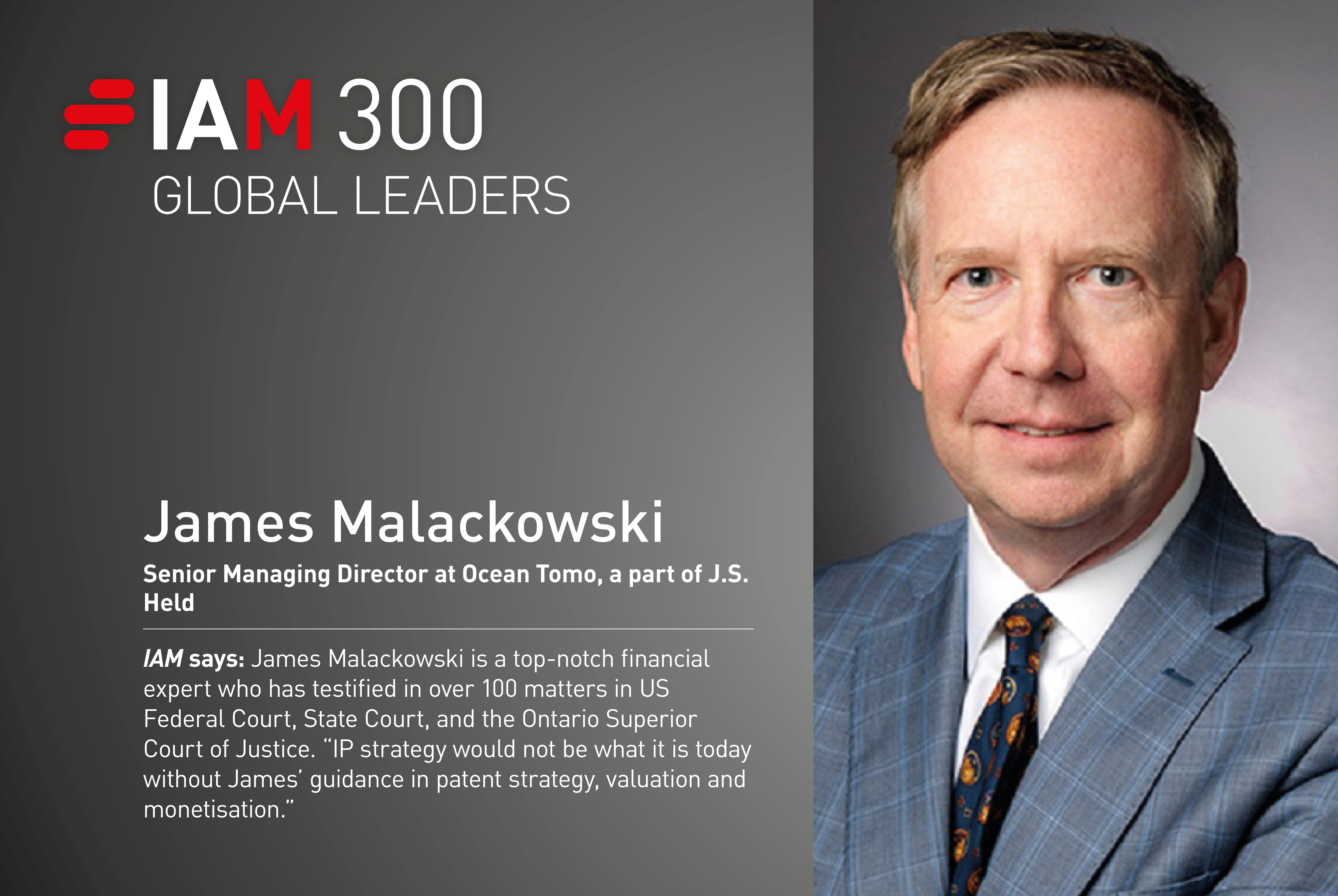James E Malackowski
As co-founder and senior managing director, how do you make sure that clients receive the best service while ensuring that all staff meet their potential?
Ocean Tomo, a part of J.S. Held, is unique in its breadth of IP services and is integrated with more than 1,500 J.S. Held industry-experienced scientific and technical experts. All client engagements draws from this diverse set of professionals to assure the highest quality of service.
How can US companies leverage intangible asset valuation models to meet evolving ESG standards?
As ESG standards evolve, US companies can leverage intangible asset valuation models in several ways, starting with the identification of ESG-related intangible assets. Once understood, experienced executives can manage the listed assets to enhance investment decisions, inform strategic planning, benchmark competition, manage risk, support marketing and brand positioning, make pricing decisions, identify M&A opportunities, optimise tax compliance and incentivise internal behaviour.
You are past president of LES International, which covers an astounding 32 countries. How did your time in this position contribute to your professional development?
The relationships, education and worldview provided through LES have been, without a doubt, the most formative contributors to my professional career. My travels as president resulted in a global network and provided me with a deep understanding of the vital role that intellectual property plays in economic development at almost every stage. My time spent on the Global Technology Impact Forum – building networks to transfer sustainable technology to some of the world’s poorest nations – altered my view of what is possible and necessary. Today, more than 20 years after my services as president of LES United States and Canada and more than 10 years after my time as LES International president, I continue to engage with the organisation. The LES membership directory is my go-to resource for networking and peer-to-peer collaboration. There are LES members almost everywhere I go. In each country that I travel to, I am only a phone call or email away from meeting a new – or old – friend and welcomed to their place of business or home. It is truly a special organisation, of which I am grateful to be a part.
What, for you, are the key characteristics of an intangible asset valuation strategy?
Over the years I have developed what, for me, is a starting template for an intangible asset valuation strategy. The underlying principle is one of context. The value of any intangible asset is unique to its owner and use. As a result, key characteristics include creating an inventory of the intangible asset to be valued, noting the use of the asset and all related or supporting assets, comparison to the next best alternative to the asset being valued and testing the sensitivity of inputs to the valuation model to identify both drivers of value as well as potential risks.
How do you expect the IP transactions space to evolve as more and more industries continue to be affected by technological convergence?
The IP transaction marketplace is constantly evolving. With my 35-year perspective I have witnessed many changes, such as:
- the initial recognition of accounting standards applying to the valuation of intangible assets;
- value increase in intellectual property due to the creation of the Court of Appeals for the Federal Circuit;
- general aggregation of company intellectual property to facilitate central management and designated leadership by a chief IP officer;
- the public sale of IP at auction driven by Ocean Tomo Auctions;
- IP-backed debt;
- IP-driven equity investment and trading driven by recognition of the Ocean Tomo 300 Patent Index;
- designation of intellectual property as playing a central role in national economic development;
- IP litigation finance and IP judgement preservation; and
- collateral insurance.
I expect that IP transactions will continue to scale, but in an incremental rather than transformative manner. Intellectual property is now a common consideration for investment and risk management. The transition from a tangible asset economy to one in which 90% of value is represented by intangible assets is largely complete (see Ocean Tomo IP Asset Market Value study). This market inversion spanned more than 25 years and reflects a permanent transition. The next decade will see further refinement and development of valuation standards through efforts like that of LES United States and Canada’s standards development organisation. Through national efforts to build regional or global IP markets (e.g, China, Dubai, Singapore and other long-term plans), we will also hopefully see the development of widely used rating platforms, similar to those presented at Ocean Tomo Ratings.
James E Malackowski
Senior Managing Director
[email protected]
James Malackowski is co-founder of Ocean Tomo, a part of J.S. Held. Along with Supreme Court Justice Stephen Breyer, he was inducted as the 87th member of the IP Hall of Fame. On more than 100 occasions, Mr Malackowski has served as an expert in various US and international courts, the USPTO PTAB and global arbitrations on questions relating to IP economics, licensing and damages.
